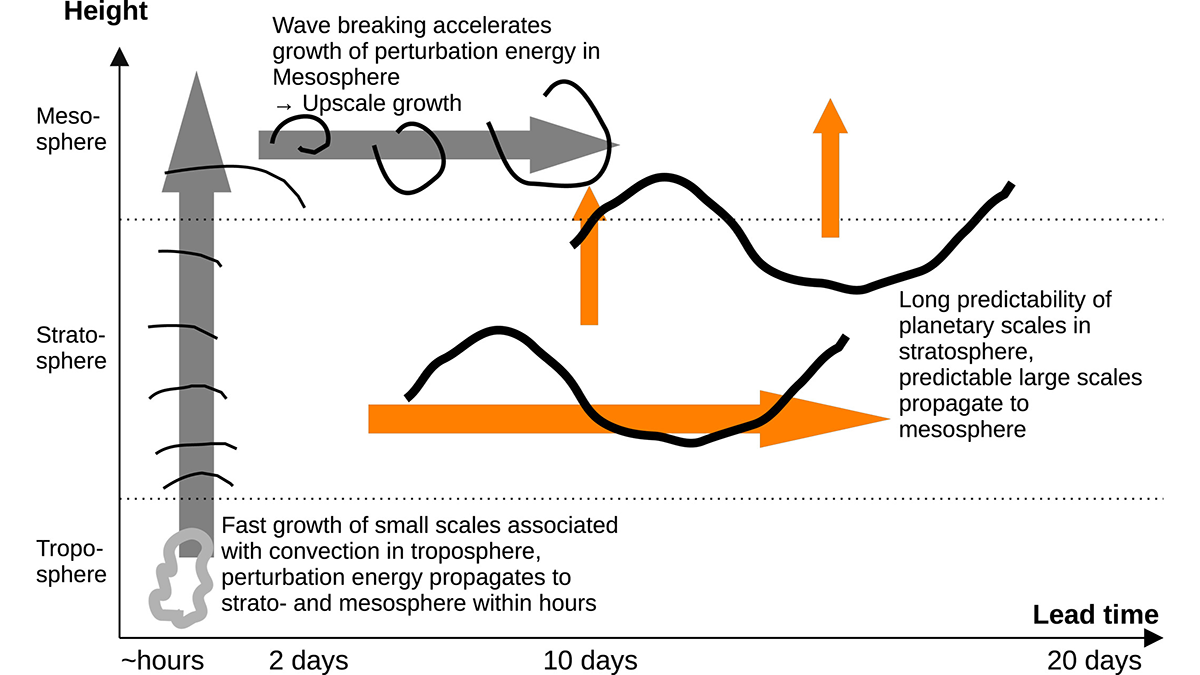Editors’ Highlights are summaries of recent papers by AGU’s journal editors.
Source: Journal of Geophysical Research: Atmospheres
Atmospheric circulations are chaotic and unpredictable beyond a certain time limit. Quantifying predictability helps determine what forecast problems are potentially tractable. However, while predictability of weather close to the surface is a much-studied problem, showing a prediction limit of approximately 10 days, less is known about how predictable the atmosphere is at higher layers.
Garny [2025] applies a high-resolution global model to study atmospheric predictability from the surface to the mesosphere/lower thermosphere (MLT; 50-120 kilometers altitude), providing new understanding of coupling between atmospheric levels and fundamental behavior of the upper atmosphere. The author shows that the MLT is somewhat less predictable than lower atmospheric layers due to rapid growth of ubiquitous small-scale waves, with predictability horizons of about 5 days. However, atmospheric flows in the MLT on larger horizontal scales of a few thousand kilometers can remain predictable for up to 3 weeks.
This research highlights the importance of high-resolution, ‘whole atmosphere’ models to understand and predict circulations in the middle atmosphere and coupling from the surface to the edge of space.
Citation: Garny, H. (2025). Intrinsic predictability from the troposphere to the mesosphere/lower thermosphere (MLT). Journal of Geophysical Research: Atmospheres, 130, e2025JD043363. https://doi.org/10.1029/2025JD043363
—William Randel, Editor, JGR: Atmospheres

